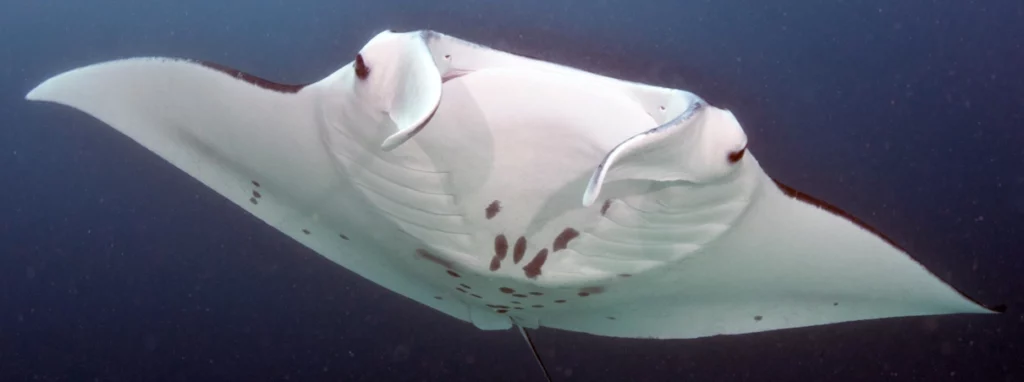Manta rays are large rays that belong to the genus Mobula. The largest species in the genus Mobula birostris can grow as large as 7 meters in width. While there is a common misconception that manta rays and sting rays can hurt you, the fact is that manta rays don’t have barbs at the end of their long tails and cannot sting you. They also have a rather unique mating ritual. Do you know how manta rays reproduce?
Female manta rays release pheromones that attract males when they are ready to mate. This results in a “manta train,” in which multiple male mantas trail behind a female in the hopes of mating with her. This can last for weeks until the last male mantas are present.
How Do Mantas Court and Mate?
Female manta rays typically take 10-15 years to reach sexual maturity. Around this age, the courtship process usually begins.
The beginning of the mating ritual is aptly named manta train. A female manta ray swims in front of several male mantas. The giant manta train we’ve seen included 20 male mantas chasing the female, both young and old.
Female mantas typically give birth to one pup every two years. After 12 to 13 months of pregnancy, they give birth to live infants that are completely capable of living without their parents. In the wild, these young mantas might survive for 50 years.
Sometimes the same female will be chased for several weeks at a time. However, as courtship advances, most males will abandon the train. This seemingly leaves only one male to succeed and impregnate the female manta ray. We always assumed that “the last man standing” would be the one to inseminate the female, but we’ve seen females being chased by single males after that and even pregnant females being the target of manta trains. (Source: Manta Ray Advocates)
How Are Manta Rays Born?
During birth, the baby manta maintains its burrito shape. The wings spread out a few seconds later as the manta pup begins to swim and glide through the water. (Source: Manta Ray Advocates)
Manta Rays’ Hygiene
Manta rays regularly visit cleaning stations along the reef because they are very fussy about cleanliness. Smaller wrasse typically manages these unique areas of the Reef, cleaning parasites and dead skin from the bodies of passing creatures. Mantas will wait patiently for an hour while these cleaners start their shifts, frequently returning to the same spot. (Source: Manta Ray Advocates)
What are the Common Threats to Manta Rays?
The biggest danger to Manta Ray’s existence is overfishing. Because they live long lives and reproduce slowly, overfished populations cannot fully recover. The reef habitat concerns include poor water quality, silt run-off, pollution, rising temperatures, and a changing climate. Manta rays are losing their formerly idyllic home as this intricate ecosystem battles to keep up. (Source: Manta Ray Advocates)
What is the Difference Between Manta Rays and Sting Rays?
These animals’ tails are the key distinction between them. Even though they may appear similar to a casual observer, they are distinct.
The barb could be poisonous and have serrated edges depending on the stingray. A stingray’s barb contains venom potent enough to kill people. It’s crucial to realize that stingrays don’t hunt using their barbs. Instead, when predators approach, they utilize their barbs as a form of protection.
Like stingrays, manta rays have lengthy tails. However, they lack barbs. This implies that neither you nor anyone else will be stung by a manta ray. You might be curious about how they defend themselves. Manta rays employ their size and speed. However, there aren’t many predators of manta rays. (Source: Cape Clasp)
Image from Mongabay
